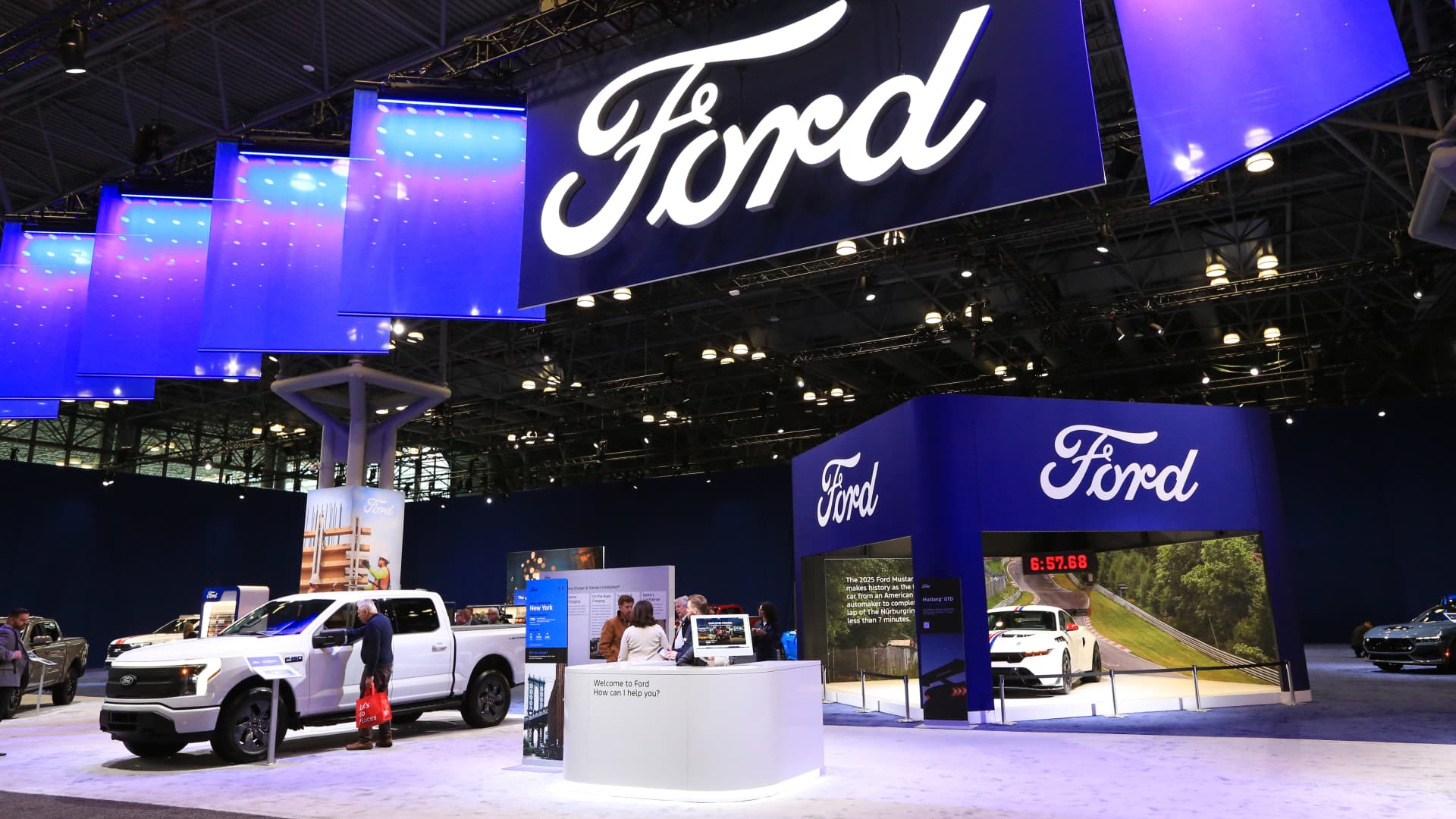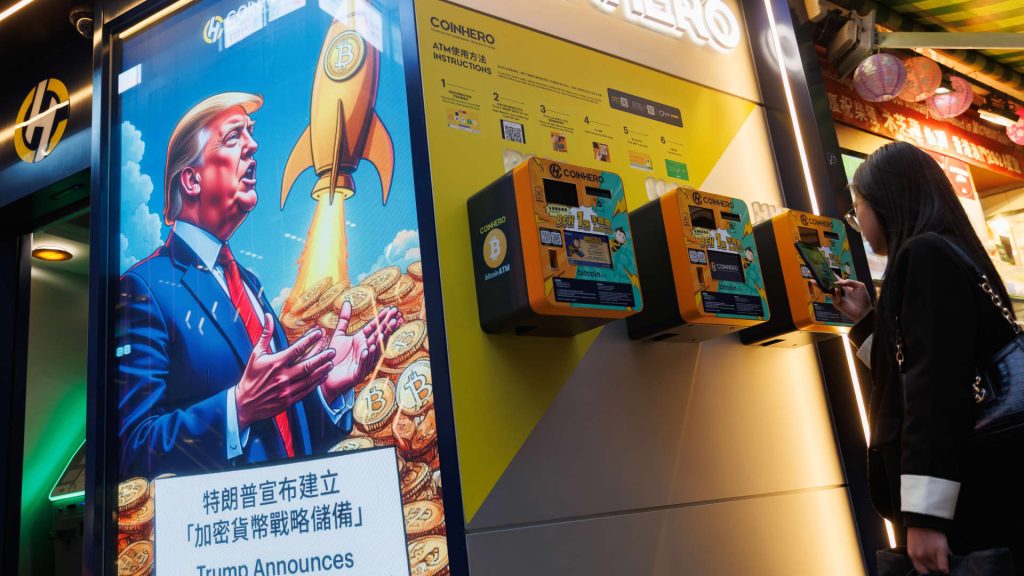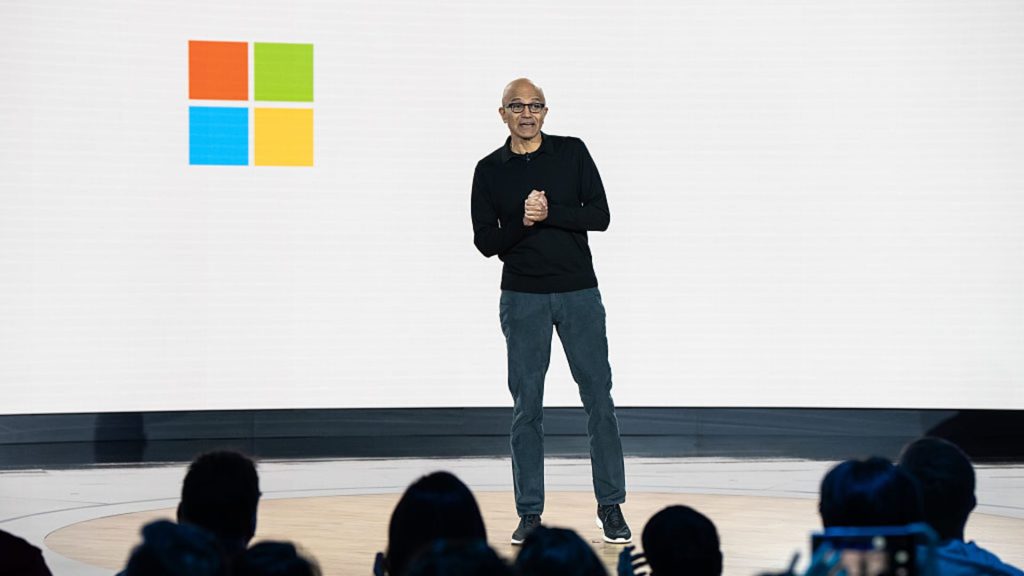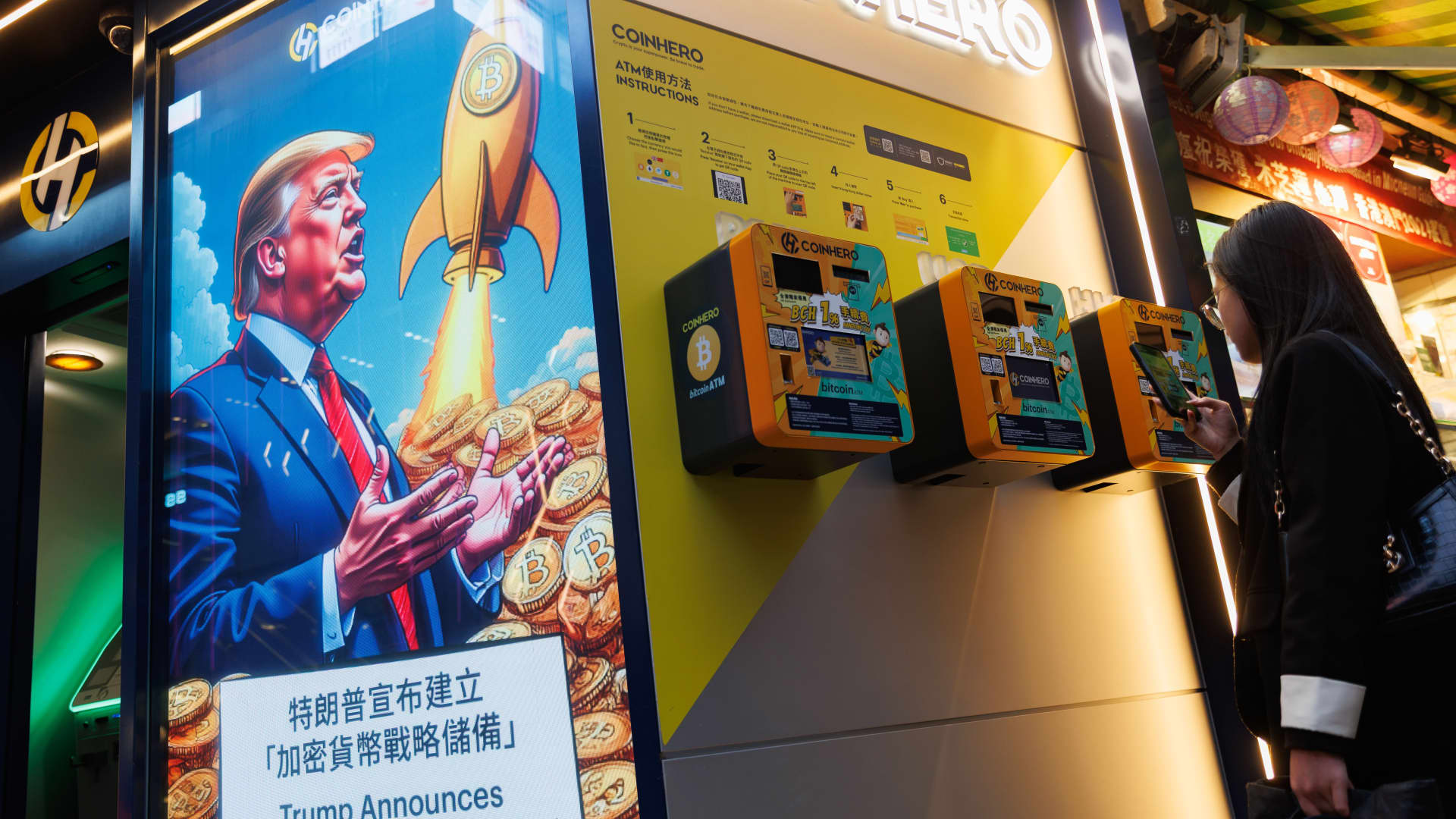Now Reading: Automakers report significant April sales increases amid tariff fear-buying, but the good times may not last
-
01
Automakers report significant April sales increases amid tariff fear-buying, but the good times may not last
Automakers report significant April sales increases amid tariff fear-buying, but the good times may not last

The Ford exhibit can be spotted at the New York International Auto Show on April 16, 2025.
Automakers like Ford Motor, Hyundai Motor, and Kia experienced substantial increases in U.S. sales in April compared to the previous year. This surge was driven by consumers rushing to buy new vehicles before possible price hikes due to tariffs.
The spike in sales was fueled by concerns over potential tariffs, leading to heightened purchasing activity from late March through April. Automakers offered special discounts and assurances of stable prices in the short term to alleviate fears of President Donald Trump’s auto tariffs.
Thomas King, president of J.D. Power’s data and analytics division, highlighted that the anticipation of tariff-induced price hikes influenced April sales trends. However, experts like King and Cox Automotive’s chief economist Jonathan Smoke cautioned that demand slowed towards the end of April as vehicle inventories dwindled and prices rose following the initial consumer rush.
Despite the temporary boost in sales, the outlook may be less optimistic due to higher costs and shrinking vehicle inventories potentially dampening future sales.
Ford recorded a 16% year-over-year sales increase in April, supported by consumer demand and an ongoing “employee pricing” program established in response to the auto tariffs. Hyundai and Kia also reported notable sales growth last month, with Hyundai pledging price stability through early June and Kia operating independently in the U.S. and noting a 14% sales increase compared to the prior year.
General Motors and Toyota Motor reported significant increases in U.S. auto sales in April, with Trump’s 25% tariffs on imported vehicles taking effect on April 3. While modifications to the tariffs were made this week, additional levies on auto parts are expected soon.
Ford CEO Jim Farley acknowledged the recent tariff adjustments as beneficial but stressed the need for further measures to support automakers and foster growth in the U.S. auto industry.






